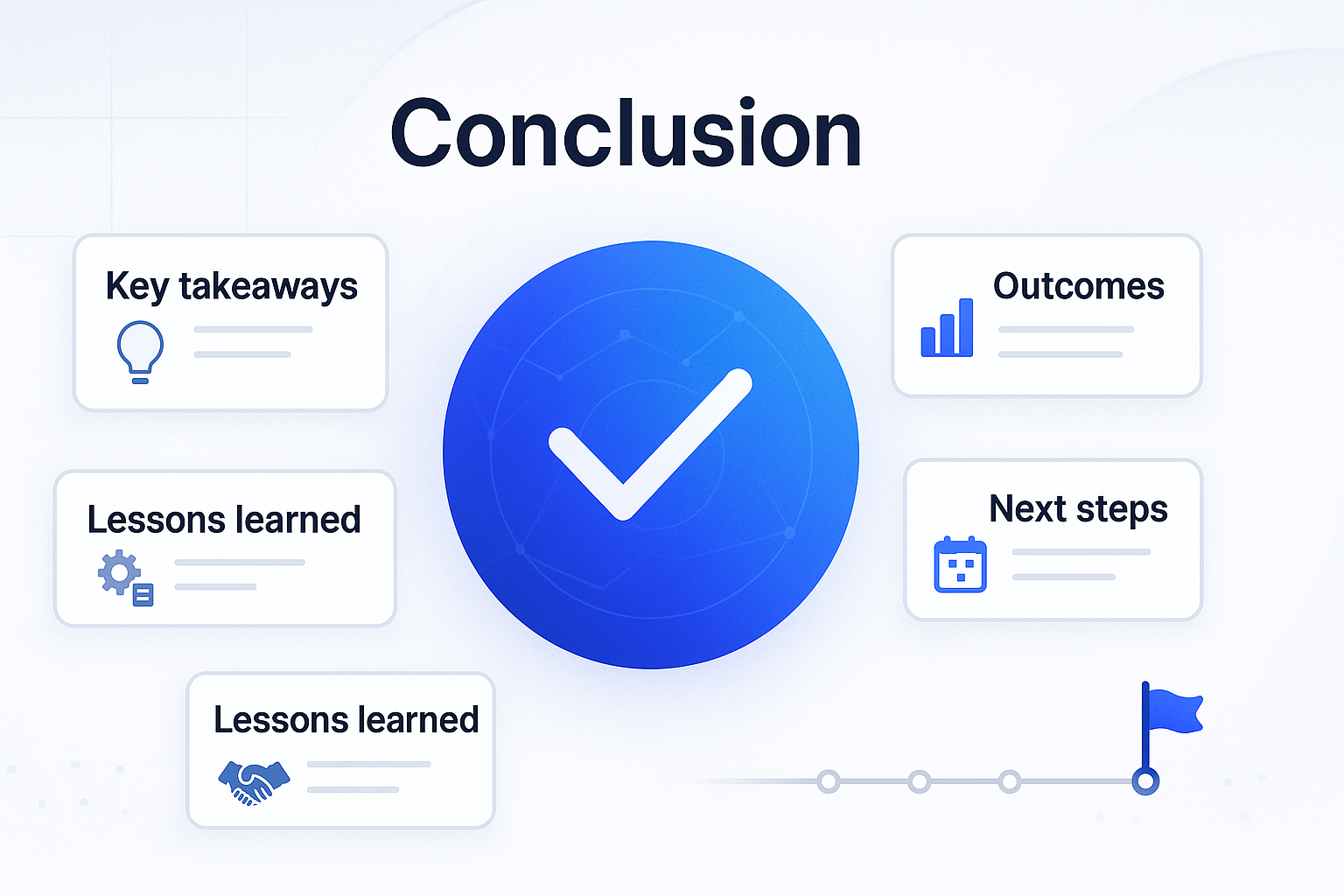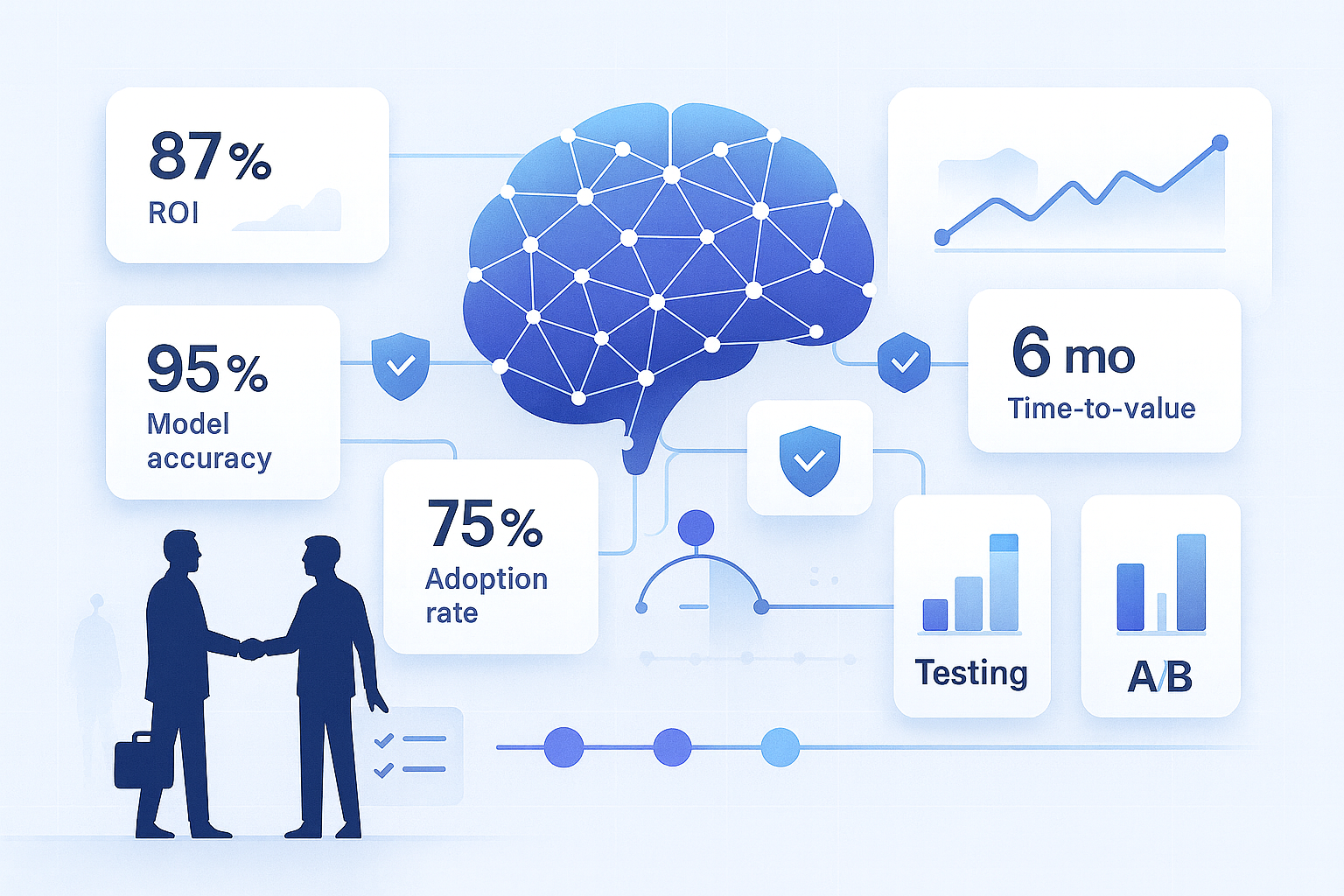AI consulting services promise transformation, but without the right measurements, success remains unclear. Businesses often rush into AI adoption without defining what outcomes they expect. The result? Misaligned goals, wasted budgets, and missed opportunities. Measuring the success of an AI consulting engagement is critical to proving value, securing executive buy-in, and building long-term momentum. In this post, we will explore the key performance indicators (KPIs), methods, and best practices that ensure your AI consulting engagement delivers measurable business growth.
Why Measuring Success Matters in AI Consulting?
When executives invest in AI consulting services, they expect impact. Whether it’s reducing costs, unlocking new revenue streams, or gaining efficiency, results must be clear and trackable. Success measurement also:
Demonstrates return on investment (ROI) to stakeholders.
Builds trust and confidence in future AI projects.
Helps refine strategy and improve model performance.
Prevents costly missteps by highlighting issues early.
Without defined success metrics, AI projects risk being seen as experiments rather than strategic growth engines.
Key Metrics to Track in AI Consulting Engagements
1. Business Outcomes & ROI
The ultimate benchmark is business impact. Track financial gains, cost savings, or productivity improvements tied directly to AI initiatives.
2. Adoption & User Engagement
AI projects often fail not because of technology, but due to low adoption. Measure employee usage rates, training completion, and satisfaction levels.
3. Model Performance & Accuracy
For data-driven AI, monitor accuracy, recall, precision, and scalability. A model that works in the lab but fails in production adds little value.
4. Operational Efficiency
Assess reductions in manual effort, faster workflows, or improved service response times. These improvements build the case for scaling AI.
5. Time-to-Value
How quickly does the AI initiative start delivering results? Shorter cycles prove agility and strengthen business confidence in the consulting engagement.
Aenean arcu metus, suscipit ac sagittis vel, varius vulputate purus. Vestibulum eget felis at ipsum suscipit elementum eget a nulla. Curabitur auctor dignissim vestibulum. Praesent vel imperdiet nunc, sit amet venenatis sapien. Aenean quis varius nibh, vel egestas metus. Aenean blandit varius lacinia. Praesent imperdiet egestas aliquet. Integer luctus ex quis feugiat malesuada. Nulla quis mollis leo, quis aliquam sem. Cras et est id dolor elementum volutpat eget et augue. Nulla eu sollicitudin lorem.
Bob Brown
Tools and Methods for Measuring Success
Dashboards and Analytics
Set up live dashboards that display KPIs in real-time. Tools like Power BI or Tableau enable executives to track progress at a glance.
Pilot Programs and A/B Testing
Start with pilot projects and compare results against control groups. This ensures value is proven before scaling across the organization.
Continuous Feedback Loops
Encourage feedback from both technical and non-technical stakeholders. Use surveys, workshops, and adoption data to refine models and strategies.
Benchmarking Against Industry Standards
Compare your performance to industry benchmarks. This positions your results in context and highlights competitive advantages gained through AI.
Common Pitfalls to Avoid
Even with expert AI strategy and consulting, organizations often fall into traps:
Vague Goals – “We want to use AI” is not a measurable objective. Define specific targets like “reduce customer churn by 15%.”
Ignoring Data Quality – Poor data equals poor results. Data cleaning and preparation are critical.
Overlooking Change Management – Without training and support, employees may resist adoption.
Scaling Too Quickly – Expanding AI projects without clear wins can spread resources thin and damage credibility.
Case Example: Measuring Success in Practice
Imagine a mid-sized financial services firm engaging AI consultants to improve fraud detection. Success metrics included:
Model accuracy of 95% or higher.
Reduction in fraud-related costs by 20% within six months.
Employee adoption rate of 80% for new monitoring dashboards.
By tracking these metrics, the firm proved ROI quickly, secured leadership confidence, and scaled AI adoption into new business areas.
Best Practices for Success Measurement
Define success criteria during the initial scoping phase of the consulting engagement.
Align metrics with both business and technical objectives.
Use a mix of quantitative (ROI, accuracy) and qualitative (user satisfaction) measures.
Reassess and refine metrics as the engagement evolves.

Conclusion
Measuring the success of an AI consulting engagement is not just about ticking boxes. It’s about proving value, learning from results, and ensuring AI drives real business outcomes. The right metrics will help you show ROI, improve adoption, and future-proof your AI strategy.
If your organization is considering AI consulting services, start with a success framework. Define your goals, align with experts, and measure results from day one. With the right approach, AI becomes not just an investment, but a growth engine.

